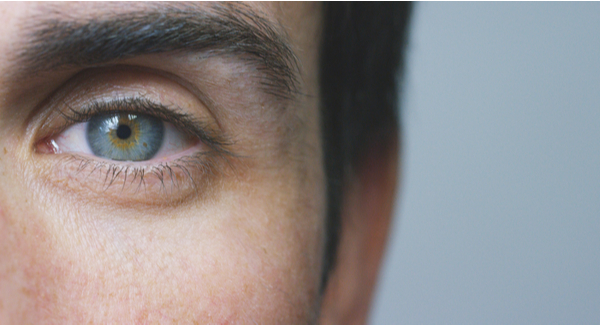Different Ways to Take Arthritis Medications
Here's a closer look at the various modes of delivery for common arthritis medications.
Oral Medicines
Pill form: Many of the drugs you take for arthritis – including acetaminophen, non-steroidal anti-inflammatory drugs (NSAIDs), some disease-modifying anti-rheumatic drugs (DMARDs) and corticosteroids – come in pill form.
How they’re taken: Instructions vary, but typically you’ll swallow the pill(s) with a big sip of water. The label might also specify that you take your medicine on a full stomach, but be sure to check if there are specific things you should or should not eat or drink when taking it. Once your body digests the pill, its contents will be absorbed into your bloodstream and take effect. Talk to your doctor before trying to cut, crush or chew your pills. While some DMARDs may be taken as a divided dose, there are others that must be swallowed whole. If you have trouble swallowing pills, some medications are available as liquids.
Topical Medicines
Creams, gels and patches: Topicals deliver medicines through your skin. NSAIDs, salicylates and capsaicin are available as creams or gels that you rub on your skin. Opioid medicines, NSAIDs and lidocaine are available as a patch you apply to the skin.
How they’re taken: Gels and creams are rubbed on the skin over the affected joint. A patch delivers a steady dose of medicine into your bloodstream over several hours. You will leave it on for 12 or more hours, depending on the drug, and then remove it. If you have psoriatic arthritis or another skin condition, talk to your doctor before using a topical medicine.
Injectable Medicines
Injected medications: Some people take the DMARD methotrexate as an injection because it may be more effective that way. Several biologic drugs (a subset of DMARDs) have to be injected because there is no pill form available. While it can be scary to think about using a needle on yourself, your doctor or nurse will show you how to prepare and inject the drug. You should get the hang of it fairly quickly. If you’d prefer not to do it yourself, ask a friend or family member to learn how and give you the injections.
How they’re taken: Injectables come two ways depending on the drug: with an auto-injector pen or a syringe. Some injectables need refrigeration. If you travel often for work or pleasure, you’ll need to plan ahead to have access to a fridge.
The needle for each type is shorter than the ones you’re used to getting at your doctor’s office. The best places to give yourself an injection are in the side of your thigh or the bottom part of your stomach (a few inches away from your bellybutton). If someone is helping you, they can give you the injection in the back of your arm. Don’t use the same spot each time you inject to prevent soreness. You can rub an ice cube on your skin first to numb the region. Then, clean the area with an alcohol swab.
With the auto-injector, the medicine is already inside the pen. You simply take off the cap and hold the device firmly against your skin. Then you press and hold the button on the pen, and the needle injects the medicine into your subcutaneous layer.
Syringes may be either prefilled or empty. You’ll have to fill the empty ones yourself from a multi-use vial. To inject yourself, you’ll place the needle into an area of fat between the skin and muscle, called the subcutaneous layer by pinching the skin. Then, quickly insert the needle and push down the plunger.
After injecting: Once you’re done injecting with either an auto-injector or a syringe, dispose of the needle in a special container you get from the pharmacy. After the injection, some people develop a skin reaction at the site of the needle puncture. Injection-site reactions cause symptoms like redness, itching, pain and possibly a rash. If you see these symptoms, call your doctor.
Infusion Medicines
Biologic infusion drugs: Several biologic drugs need to be given straight into your bloodstream. You’ll visit the doctor’s office, a hospital or an infusion center to get an infusion. Infusions are given on different schedules, ranging from weeks to months apart. You may need to consider your work and personal schedule when planning your infusions.
Wear loose-fitting clothing to your infusion appointment to make it easier for the medical team to monitor your vital signs, and to keep you more comfortable while you wait. You may want to bring a book, magazine, music or audio book, since some infusions can take two hours or longer.
How they’re taken: About 30 minutes before your infusion, you may be given a corticosteroid medicine through a vein to prevent you from developing a reaction to the infusion drug. The infusion is given through a needle placed into a vein (called an IV). While you get the infusion, the nurses will check your breathing rate and blood pressure and monitor for signs of a reaction to the biologic. If you do have a reaction, your doctor will give you an antihistamine, acetaminophen, or a steroid drug to treat it.
After getting an infusion: You will need to watch for signs of an infusion reaction at home, because some reactions can occur up to 14 days after treatment. Signs of an infusion reaction include flushing, rash, fever, headache, shortness of breath, chest pain and heart palpitations. Call your doctor if you have signs of an infusion reaction.

Stay in the Know. Live in the Yes.
Get involved with the arthritis community. Tell us a little about yourself and, based on your interests, you’ll receive emails packed with the latest information and resources to live your best life and connect with others.


